DEVELOPMENT OF THE HEAD AND NECK
Pharyngeal Pouches, Membranes, and Clefts
Overview
GENERAL INFORMATION
3 major germ layers form the initial developing embryo:
• Ectoderm
• Mesoderm
• Endoderm
Mesoderm differentiates into:
Ectoderm gives rise to 2 layers:
The head and neck are formed by:
Most of the head and neck is formed from the pharyngeal arches
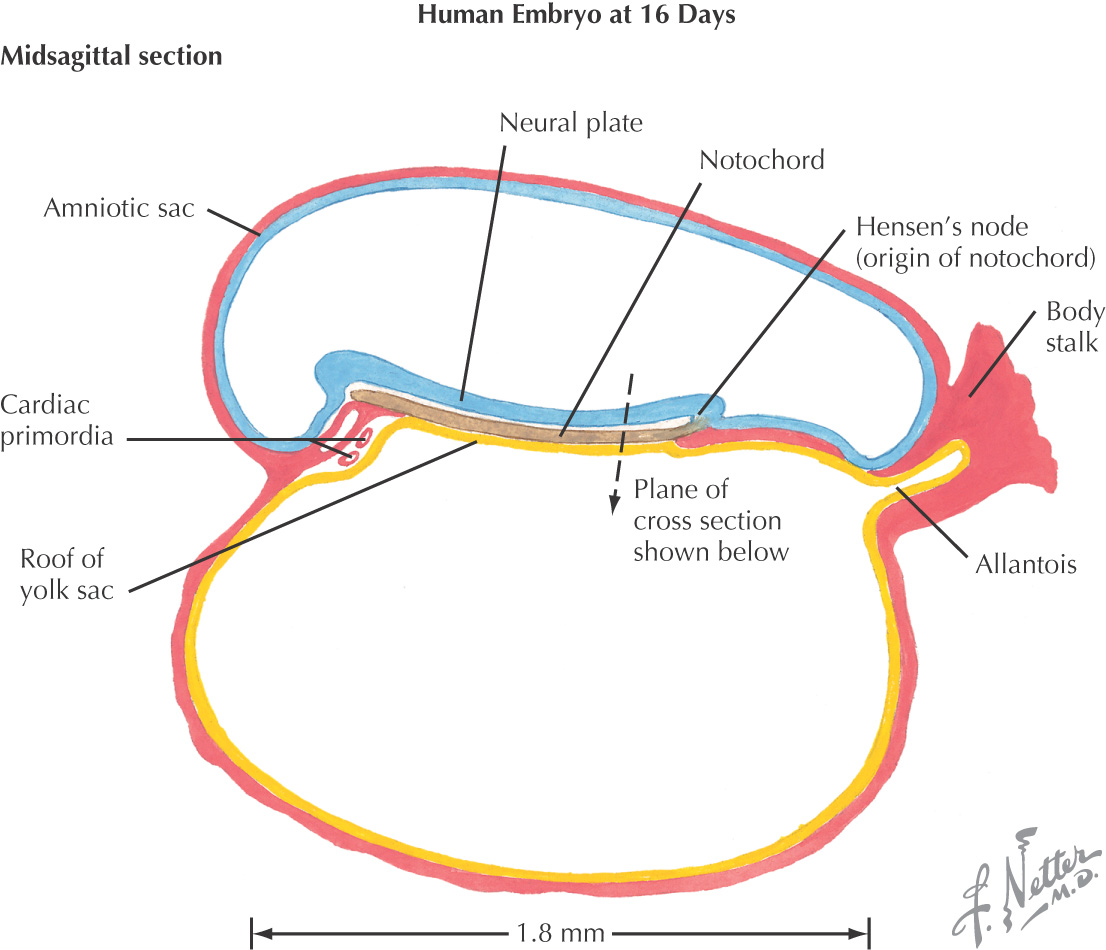
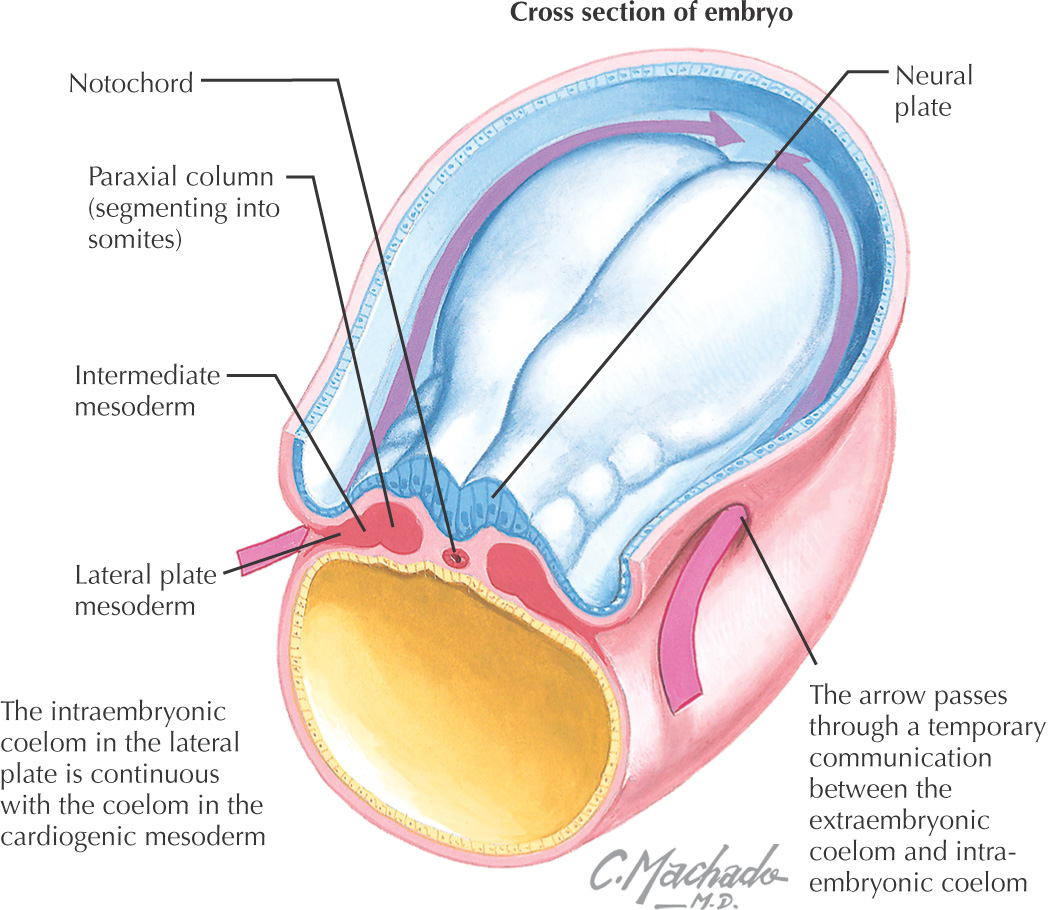
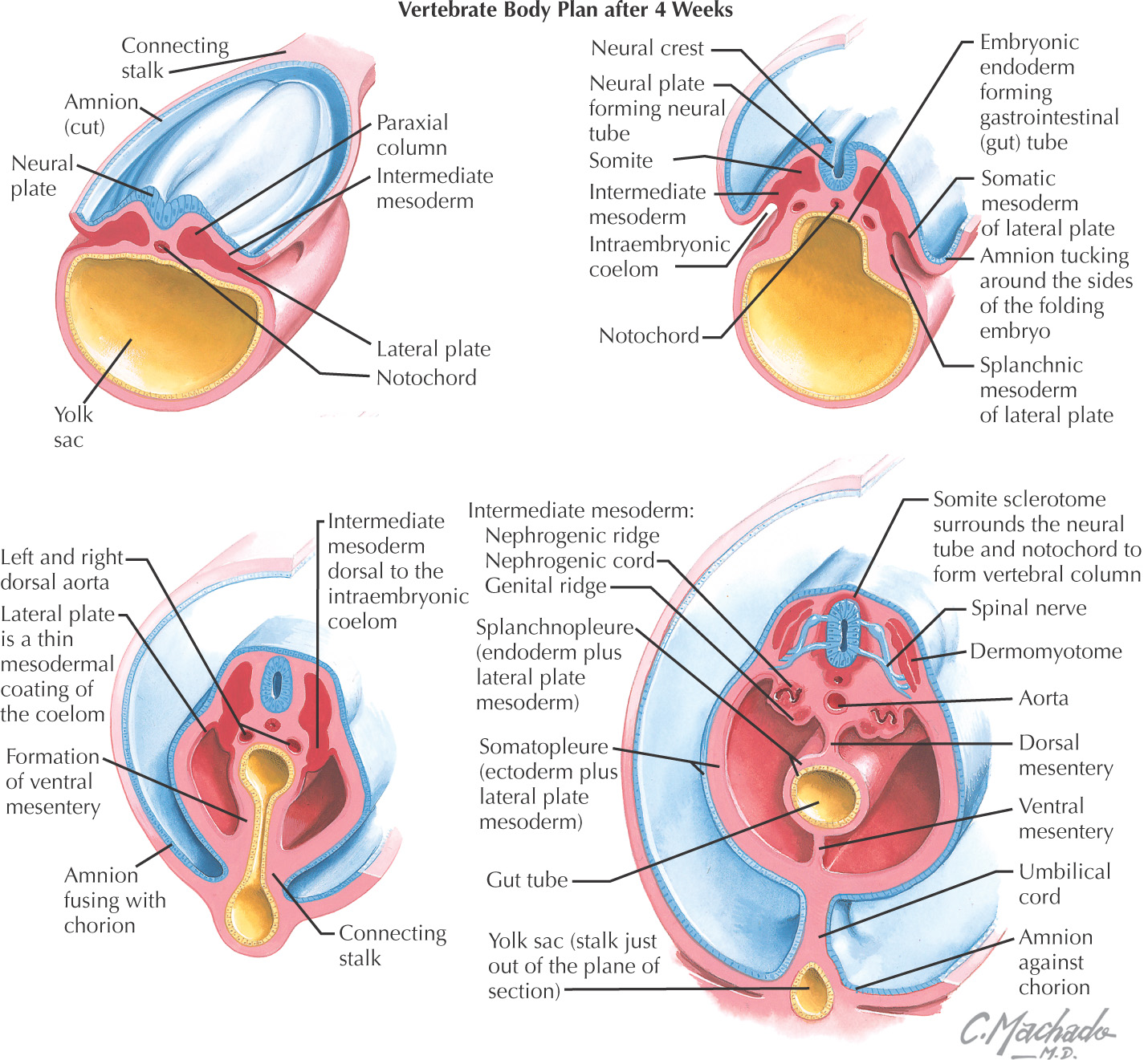
Pharyngeal Arches
GENERAL INFORMATION
Start forming in the 4th week of development
Develop as blocks separated by pharyngeal clefts
Initially, 6 arches develop, but the 5th regresses
Arising from the endoderm are compartments called pharyngeal pouches that extend toward the pharyngeal clefts
Help form 4 of the 5 swellings of the face:
• 2 mandibular processes (pharyngeal arch)
• 2 maxillary processes (pharyngeal arch)
Composed of:
• Central part–lateral plate mesoderm, paraxial mesoderm, neural crest
Skeletal components develop from the neural crest tissue
Muscular structures develop collectively from the mesoderm
Each arch is innervated by a cranial nerve that migrates with the muscles

DERIVATIVES OF THE PHARYNGEAL ARCHES
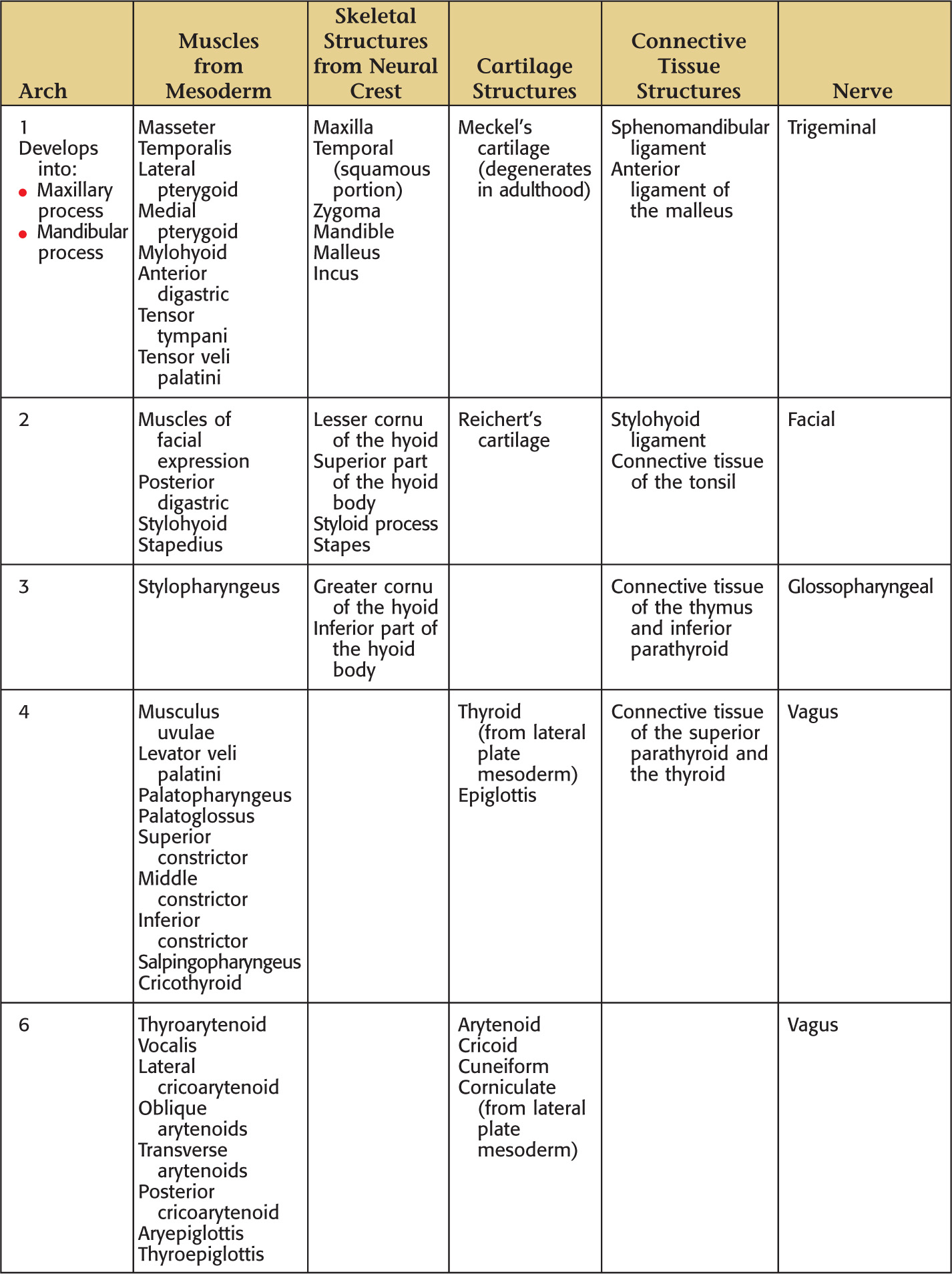
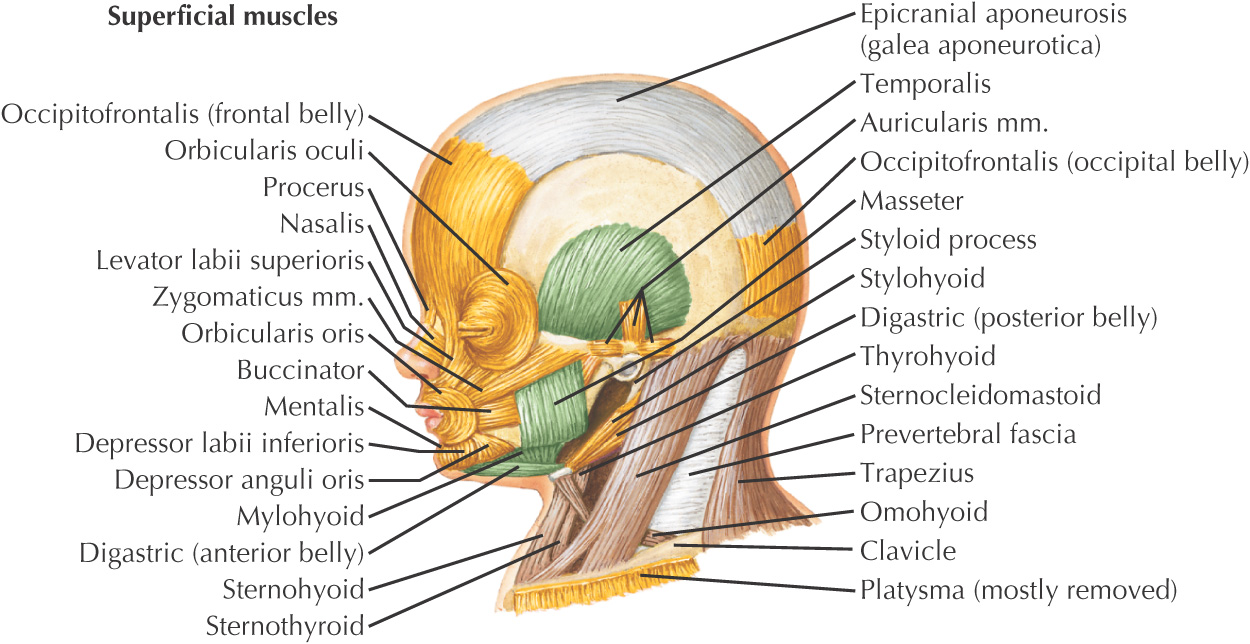
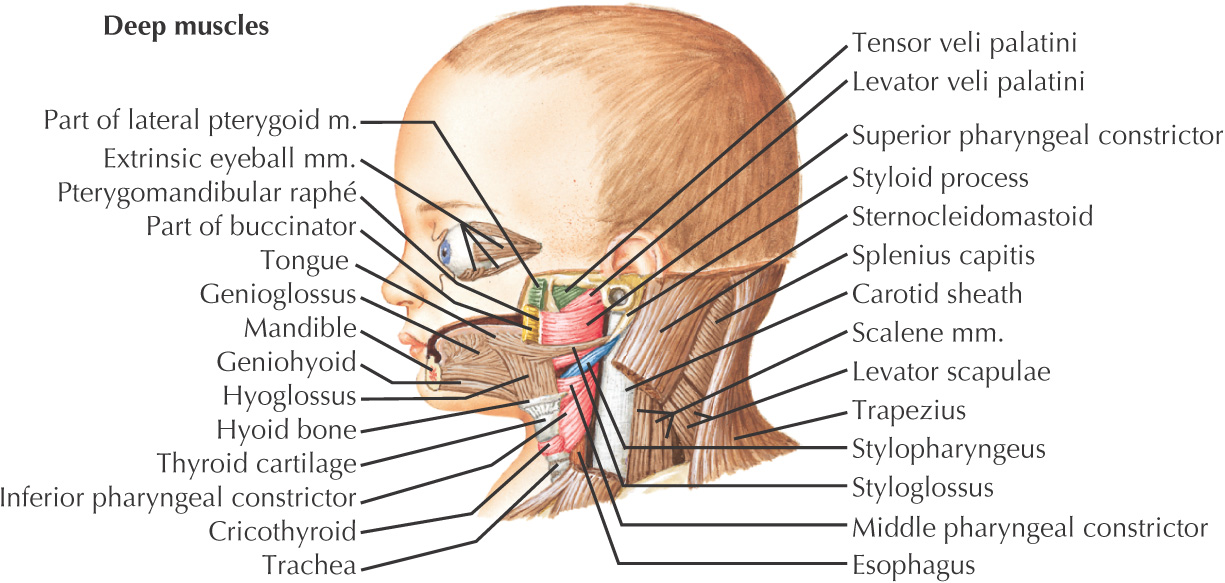

Pharyngeal Pouches, Membranes, and Clefts
GENERAL INFORMATION
Pharyngeal pouches—4 develop from endoderm
Pharyngeal clefts—each is a groove formed from ectoderm
Pharyngeal membranes—each is composed of tissue located between a pharyngeal pouch and a pharyngeal cleft; composed of external ectoderm, mesoderm and neural crest in the core, and an internal endoderm lining
PHARYNGEAL POUCHES
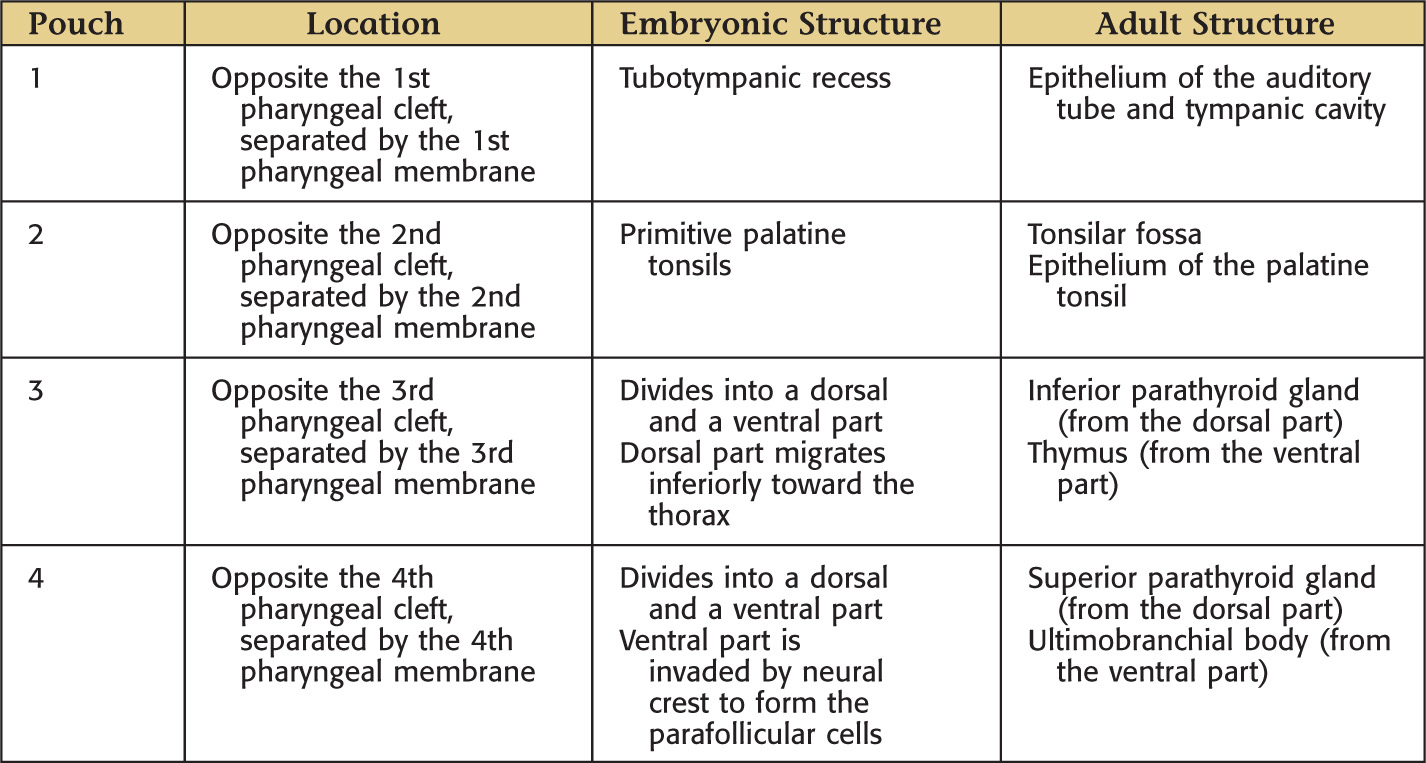
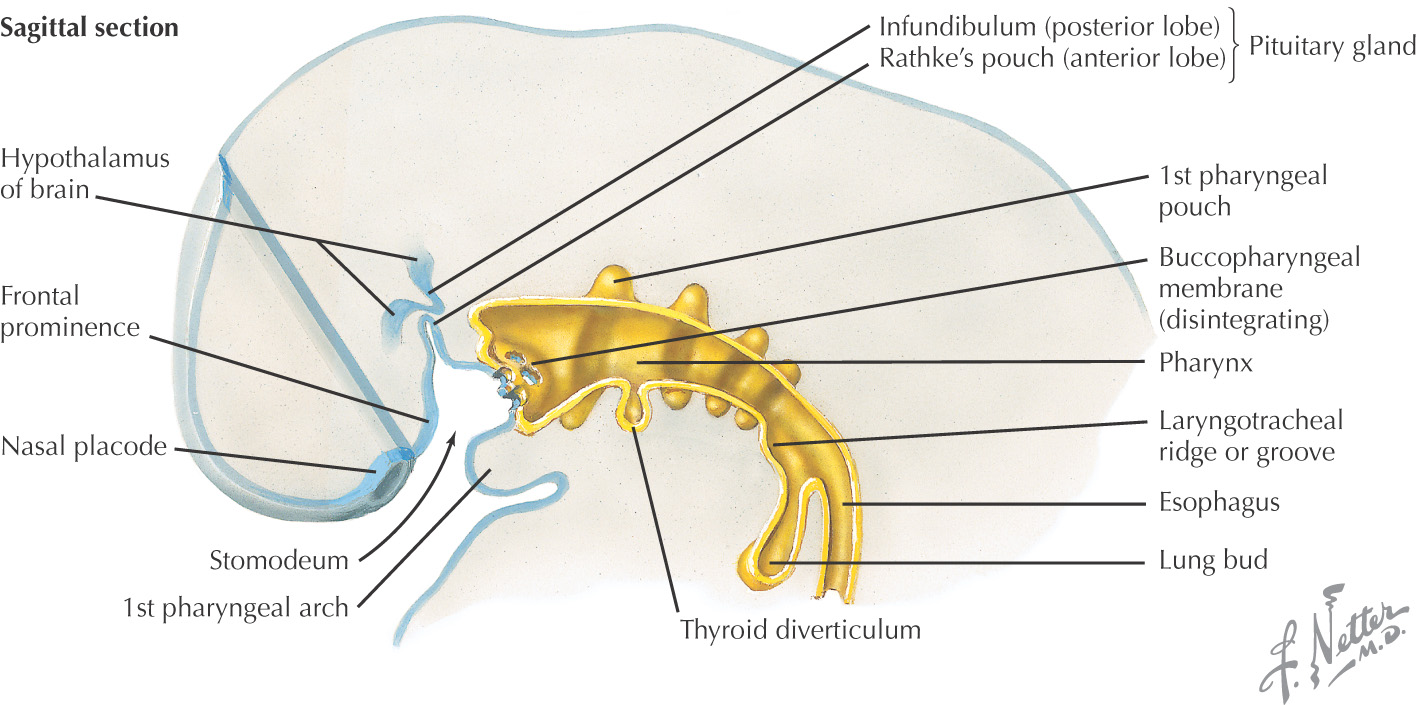

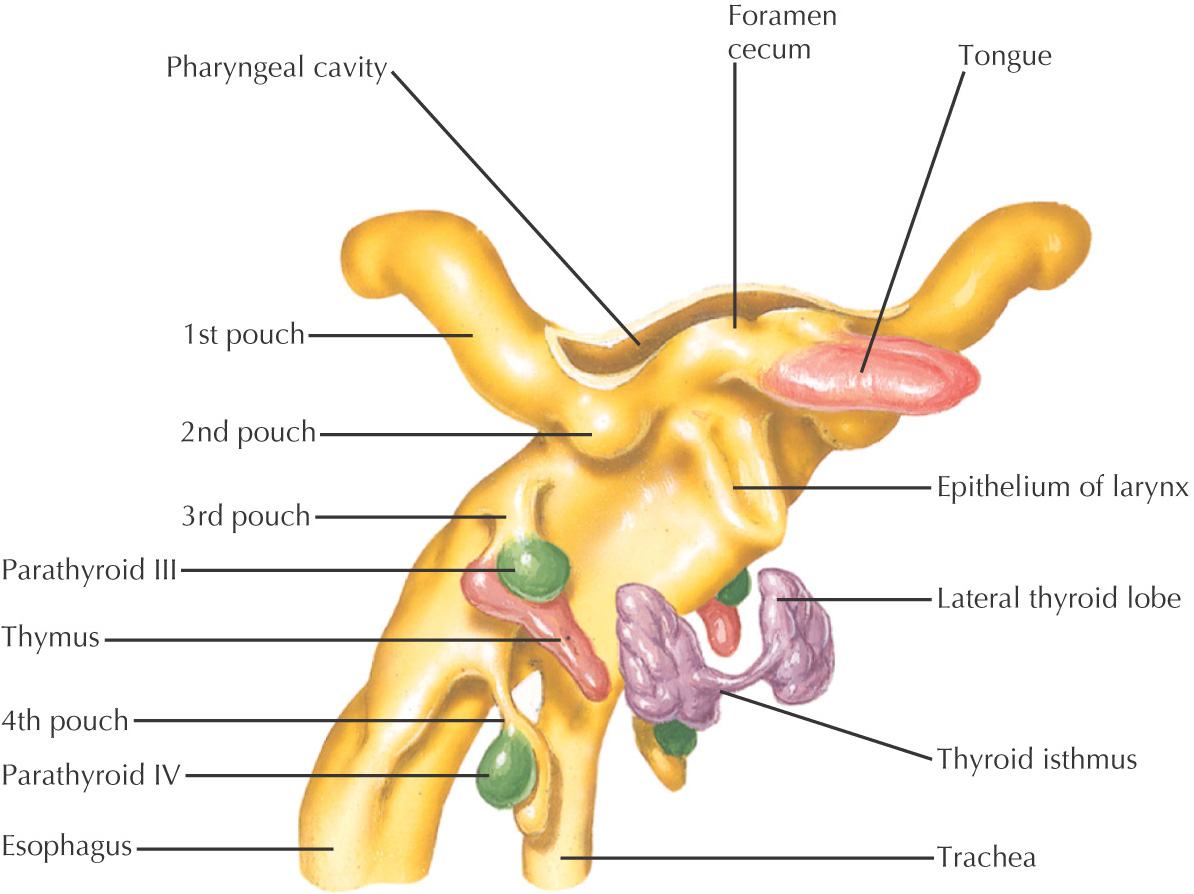
PHARYNGEAL MEMBRANES

PHARYNGEAL CLEFTS


Skull
GENERAL INFORMATION
Skull is formed from:
• Lateral plate mesoderm (neck region)
Bony skull is formed by either of 2 mechanisms:
• Intramembranous ossification
Stay updated, free dental videos. Join our Telegram channel

VIDEdental - Online dental courses


